Last Updated on March 26, 2024
Ecological landscaping benefits you AND the planet! Save money, improve air quality, and capture carbon in your yard with these eco-friendly landscaping strategies. Here’s how to put your yard to work for the planet.
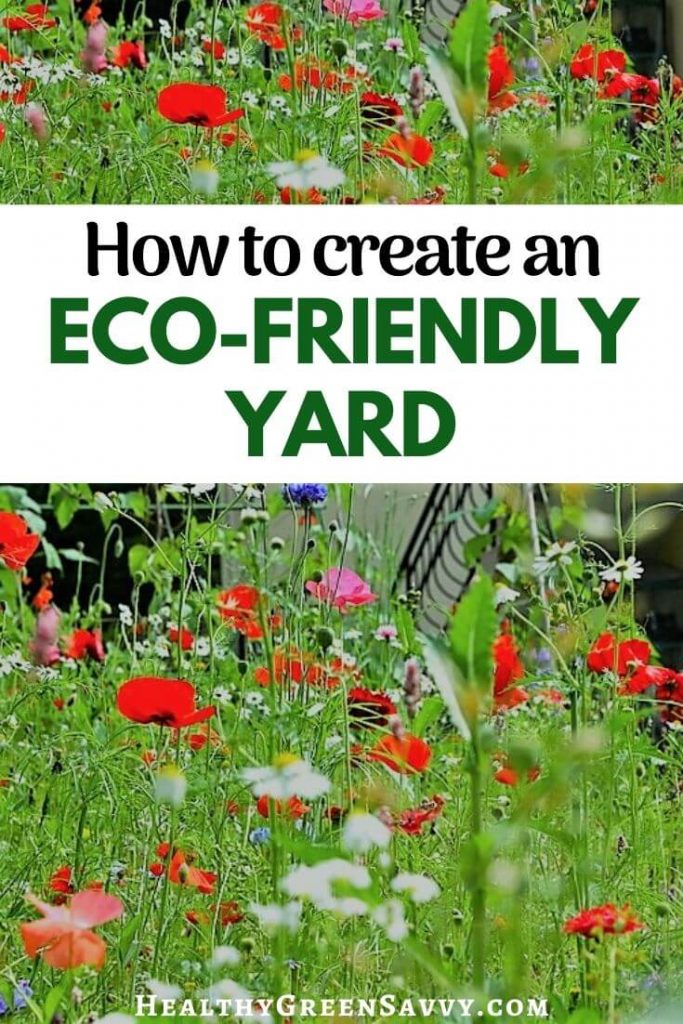
WHY CONSIDER ECOLOGICAL LANDSCAPING?
Your yard is about far more than curb appeal – it can have a significant impact on your carbon footprint, either adding greatly to it, or shrinking it considerably with ecological landscaping practices.
Here’s the deal: All that grass, fertilizer, and mowing is seriously bad for the planet. There are over 40 million acres of lawn in the United States, requiring more than 800 million gallons of gas EVERY YEAR.
That’s 16 BILLION pounds of CO2 into the atmosphere! To cut grass. Insane, right?
(Experts believe another 17 million gallons of gas are spilled each year while refilling lawn mowers. Exxon Valdez? A mere 11 million gallons.)
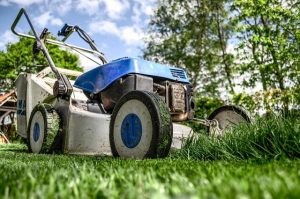
Worse still, the climate impact of fertilizer and pesticides is huge. Each pound of the stuff takes 6 pounds of carbon to produce. Fertilizer has an especially large climate impact: It breaks down into nitrous oxide, a greenhouse gas 300 times more potent than CO2.
(I interviewed some experts in the field for a more formal discussion of this issue in a piece I wrote on ecological landscaping for Sierra last year. If you want more detail, you can find that piece here.)
HOW TO USE ECOLOGICAL LANDSCAPING TO MAKE YOUR YARD MORE ECO-FRIENDLY
Your number one move to cut the climate impact of your yard: Avoid carbon-intensive fertilizer. Then, try replacing some of your lawn with plants that can sequester more carbon and require less water and energy. An oak tree 18 inches in diameter, for example, can store nearly 1000 pounds of carbon each year, and larger trees store even more.
If you’re an average American, you’re emitting 21 tons of carbon each year driving, powering your home, eating, and shopping. A few trees can offset that number considerably. If those trees also help feed your family, you can also shrink your foodprint. Here’s more on what sustainability means and a worksheet to make the move to sustainable living easier.
You can find out more about the benefits of specific trees using the National Tree Benefits Calculator, which will show you not only carbon sequestration but energy and water savings and the impact on air quality and property value.
Say you replace some gas-guzzling grass with a couple apple trees and a few blueberry bushes. You’ll not only get free organic fruit for years to come, you’ll sequester hundreds of pounds of carbon each year and need less energy to cool your house.

Ready to transform YOUR yard into a climate-change-fighting oasis? Here are
5 savvy ways to use ecological landscaping to create a climate-positive yard.
1. LIMIT THE LAWN AND MANAGE IT WISELY
Get Rid of Some Grass
Consider reducing the size of your lawn or getting rid of it altogether. There are some excellent grass alternatives, including moss, clover, creeping thyme, and numerous other ground cover herbs. If you live in a drier region, consider some especially drought-tolerant ground covers.
Shady parts of my yard are now covered in wild violets, while sunnier areas have edible clover, which besides being a terrific no-maintenance groundcover, can be eaten or used medicinally. If you really want grass, look for a “no-mow” variety. No-mow grasses top out at about 4 inches and form a nice thick carpet of grass.
Skip the Fertilizer
Instead of dousing your lawn with petrochemicals, use a mulching mower and leave the grass cuttings where they fall. They will provide a natural slow-release fertilizer that should be sufficient to feed your lawn – no chemical fertilizer required! You’ll save money and pounds of carbon every summer.
Mow Less
Mowing less often and not cutting it too low will not only save gas and cut down on pollution, but will also help keep weeds out and reduce the need for watering.
Adding some flowering plants to your grass lawn can help you make lawn you want to keep more environmentally positive. A flowering bee lawn provides food and habitat for pollinators, uses less water and fertilizer, and needs far less mowing than a grass-only lawn.
Avoid Fossil Fuels
Use an electric or human-powered mower rather than a gas one. Skip other gas-powered tools as well, especially leaf blowers, which have an astonishing output of CO2. One study estimated that using a leaf blower for a half-hour emitted as much climate pollution as driving nearly 4000 miles in a pickup truck!
Waste Less Water
Water only when you need to, avoid watering in the middle of the day, and be sure the water lands on the plants, not the sidewalk.
Pass on the Poisons
Avoid herbicides and pesticides, which aren’t healthy for your family and endanger our pollinators. Rather than poisoning your yard and our waterways, make friends with some of the amazing edible weeds that likely pop up in your yard. Dandelions, for instance, are an incredibly rich source of food and medicine. Here’s how to eat dandelions, including the flowers, greens, and roots.
2. ADD NATIVE PLANTS AND TREES TO YOUR LANDSCAPE
Larger plants help sequester carbon, while their deep roots help water infiltrate the soil; in contrast, grass lawns’ shallow root systems let water rush off without being absorbed. This strains stormwater systems and usually means you’ll need to water more. (The water piped into your house took energy to purify and deliver, so more water=more carbon.)
Because native plants are naturally adapted to our climate, they also require no fertilizer and little water or maintenance. Ask for native plants at your local nursery, or get divisions from a friend for free. (Here’s how to get free plants for your next eco-savvy gardening project.)

3. LANDSCAPE FOR ENERGY SAVINGS
Strategically located trees can shade your home in summer and protect it from winter winds, significantly lowering your energy use (and power bill). Add shade trees to shield your home and air conditioning unit from the sun.
Consider vines that add shade and protect your home from heat as well. Here are some helpful resources for ecological landscaping practices that can reduce energy needs from the Department of Energy.
4. GROW SOME OF YOUR OWN FOOD
Using part of your yard for fruit trees or vegetable gardening allows you to shrink the ecological footprint of your food, while saving you money. Even growing a little food can help, though I’m a fan of growing food everywhere possible. More people are replacing their lawns with a front yard vegetable garden every day.
Fruit trees and shrubs are an easy way to grow food with little work. There are also dozens of perennial vegetables to consider adding to your plantings for delicious veggies that don’t need planting every season.
Never grown anything? Pick up my quickstart guide to growing food for total newbies by filling in the form here!
Learn more about growing food in a boulevard garden if you’d like your “parking strip” to do more than create more space to mow.
In fact, you’re probably already growing numerous edible plants without even realizing it. In addition to dandelions, your creeping Charlie, Virginia waterleaf, purslane, lambsquarters, clover, cleavers, chickweed, violets, and numerous other common wild plants are edible.
5. COMPOST FOOD AND YARD WASTE
You probably know that when food waste breaks down in the landfill, it emits methane, a greenhouse gas far more powerful than CO2. Composting your food waste keeps this from happening, while also preserving those valuable nutrients for your plants. (So you won’t need fertilizer — see how that works?) Composting is a win-win.
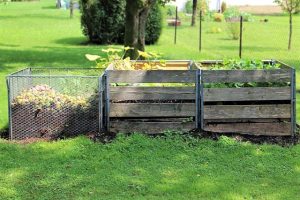
Composting can be as easy as tossing some food scraps and leaves in a bin. Here’s a good guide to getting started composting, including a great list of 100 things you can compost. In addition to saving on fertilizer, if you pay for trash collection, you can save money by wasting less. Why would you want to pay more to pollute, anyway?
Other great reasons to adopt some or all of these strategies: You’ll help endangered pollinators, improve air quality and protect our water supply. (Stay tuned for more detailed posts on these topics 🙂 )
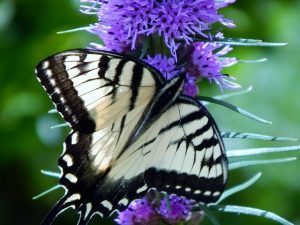
If we used ecological landscaping practices and replaced even a fraction of all that lawn, imagine the impact on the planet.
Related: Want to do more to shrink your carbon footprint? Save big with renewable energy before incentives disappear. Here’s more about the benefits of home solar power. If you want to know more about the most effective ways to live more sustainably, here’s an overview of what sustainability means and here’s a customizable worksheet to help create a sustainable lifestyle.
What do you do to make your yard climate-positive? Do you already practice ecofriendly landscaping? Share in the comments!
Pin to save these ecological landscaping tips for later!

Ecological landscaping photo credits: Conger Design, Skitterphoto, JamesDeMers, PublicDomainPictures, Antranias, inkflo, randtdiamond
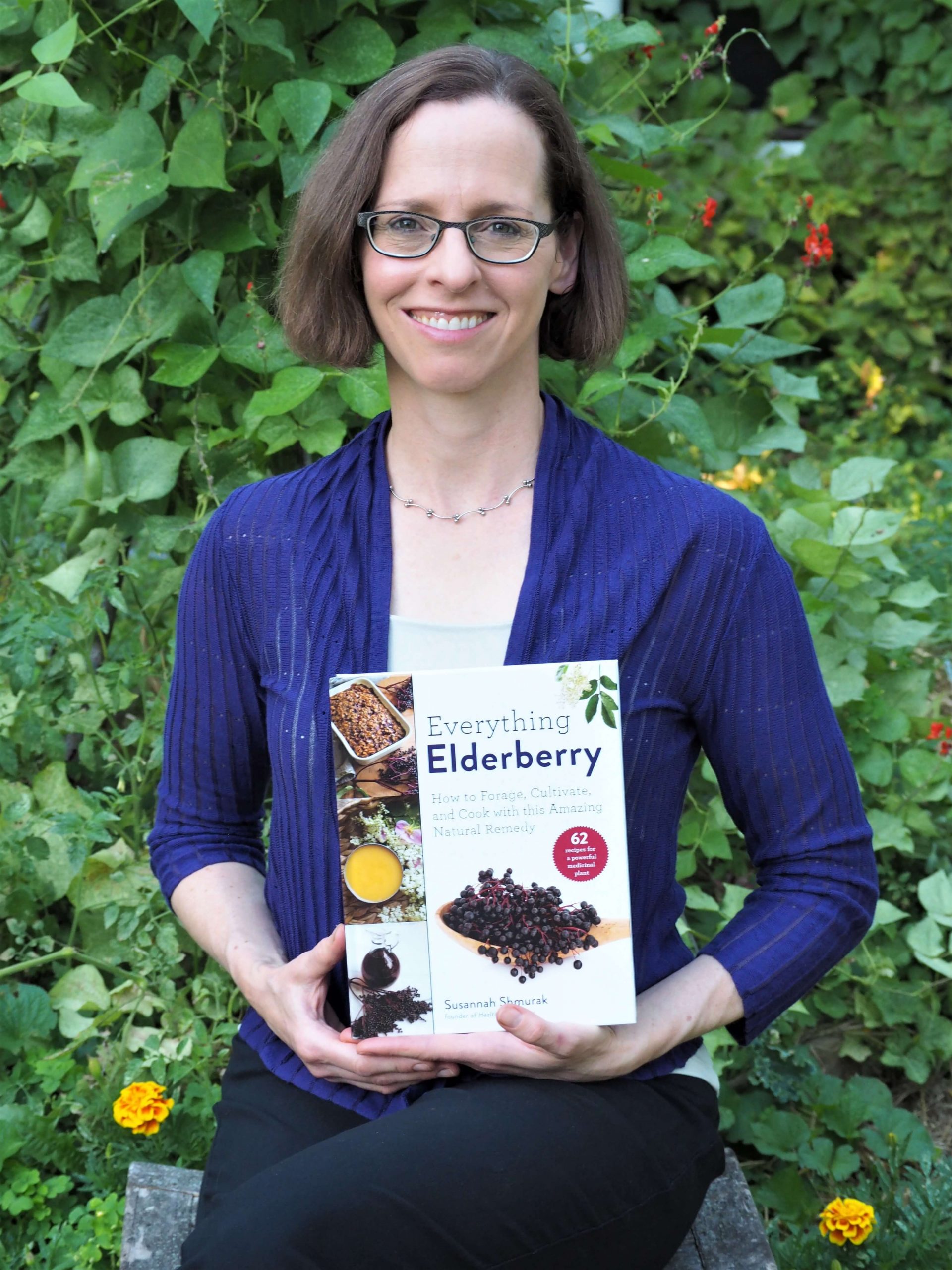
Susannah is a proud garden geek and energy nerd who loves healthy food and natural remedies. Her work has appeared in Mother Earth Living, Ensia, Northern Gardener, Sierra, and on numerous websites. Her first book, Everything Elderberry, released in September 2020 and has been a #1 new release in holistic medicine, naturopathy, herb gardening, and other categories. Find out more and grab your copy here.
 Hi, I'm Susannah, a garden geek, energy nerd, and fan of healthy food and natural remedies. Need some simple, practical solutions for living healthier and greener? You've come to the right place! More about me and my green projects
Hi, I'm Susannah, a garden geek, energy nerd, and fan of healthy food and natural remedies. Need some simple, practical solutions for living healthier and greener? You've come to the right place! More about me and my green projects